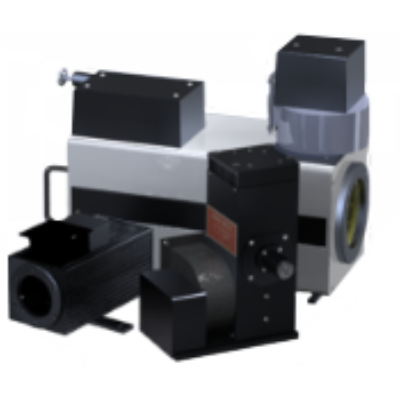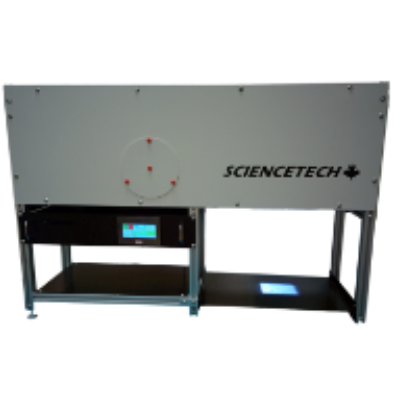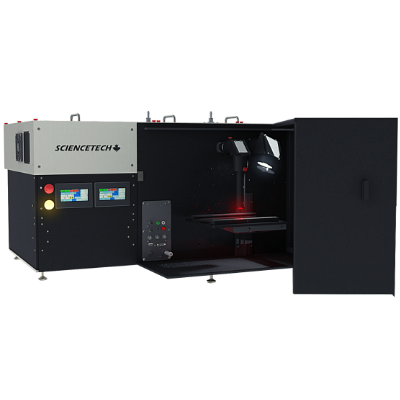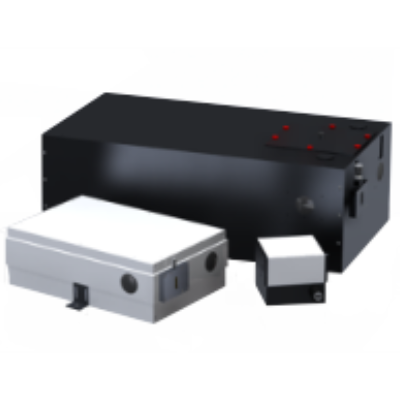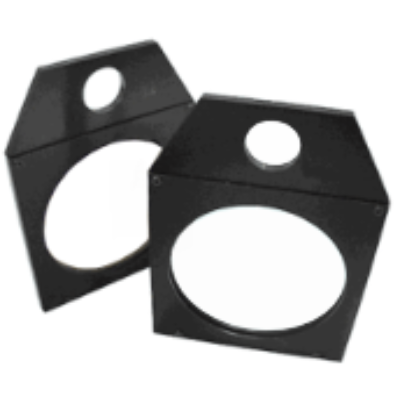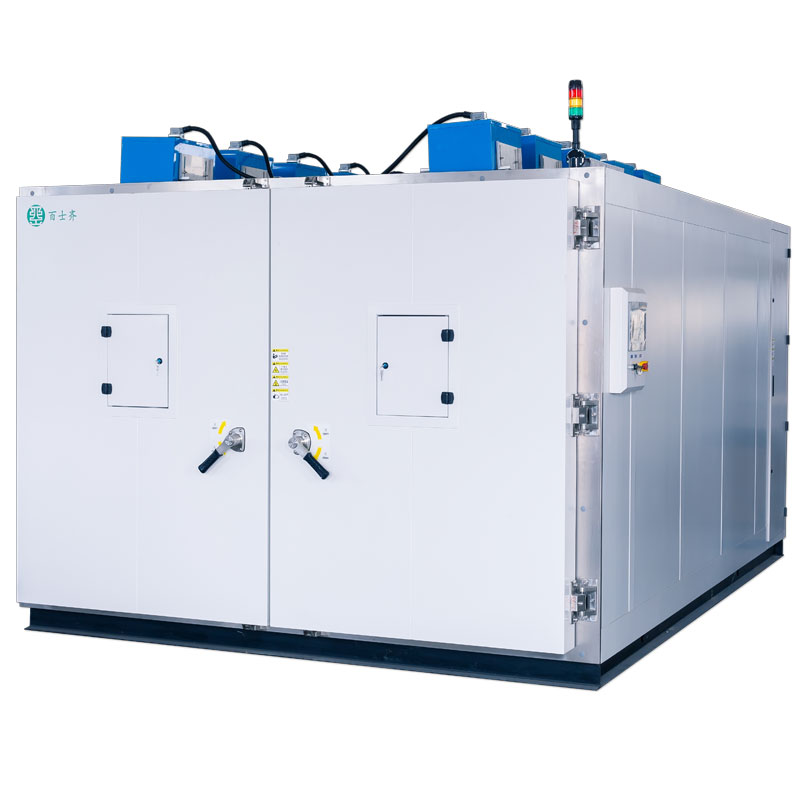Highly Collimated Solar Simulator
With Automated Beam Angle Movement
This solar simulator was developed for a prominent national space agency. The agency has a range of projects requiring solar simulation and when a new project appeared with stringent requirements, they approached Sciencetech to provide a highly accurate solar simulation system.
Customer Requirements
Some members of the customer agency had hands-on, past experience using one of Sciencetech's highly collimated solar simulators. For a new project testing their satellite sensors prior to launch, they required a larger, much more unique version of our product. They approached us in need of a solar simulator with an extraordinarily close match to the sun in terms of irradiance, collimation angle, and spectral match.
Additionally, they wanted automation to manipulate the solar simulator in X, Y, Z, and 2 rotation angles. Initial discussions considered several automation implementations and initial engineering analysis determined that the physical limitations of xenon short arc lamps would make it very challenging to meet the desired specifications for collimation along with the other criteria. Sciencetech determined a method to achieve the most important specifications and presented it to the customer. The guidelines and criteria were approved and Sciencetech initiated the designing of the project.
Specifications
The customer had precise guidelines for:
| Collimation Full Angle | 90% power within 0.69° |
| Target Size | 33 cm diameter |
| Spatial Non-Uniformity | 2.95% (Class A) |
| Temporal Instability | 1.5% (Class A) |
| Intensity | 1366 W/m² (AM0 spectral match) |
| Attenuated Intensity | 1.366 W/m² (down to 0.1% attenuation) |
| Output Direction | Horizontal |
The Optical Design Structure
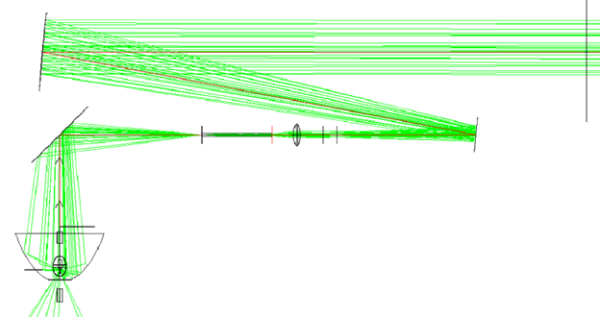
During the design process, we used a combination of optical modeling and mathematical analysis to solve the multi-faceted challenge of how to make a highly uniform and intense light source with a large target area, specific spectral match and divergence angle approaching that of the sun.
An ellipsoidal back reflector collected a significant portion of the lamp emission and focuses into a homogenizing light pipe. This light pipe guides the light via total internal reflection and the many reflections serve to mix the light rays, making the output more uniform. An array of lenses and turning mirrors were used to direct the light to a collimating mirror which reflects the light to form nearly parallel rays, producing high irradiance and low beam divergence at the target plane.
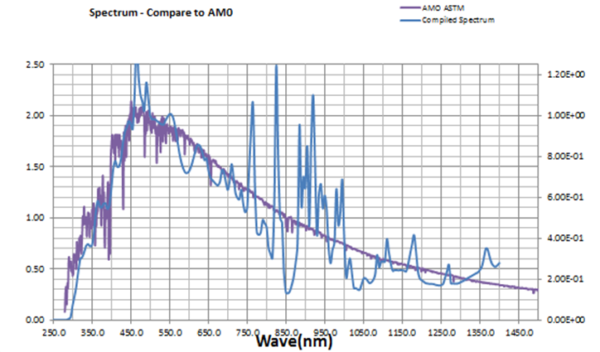

Mechanical Design for Automated Motion Control
Our customer required automated motion of the entire solar simulator in 5 axes—X, Y, and Z, as well as 2 axes of rotation. Additionally, the entire system needed to operate inside a cleanroom, necessitating isolation of the solar simulator’s air cooling system.
Sciencetech designed an automated mechanical stage and custom software to meet these automation goals, and provided a special cooling design, instrument components, and housing design to meet these needs.
The motorized movement system was built and tested and its software was created in-house. The movement system, housing, software, and optical elements were completed according to the customer’s specifications for all 5 axes of movement and a software GUI was included for easy control.
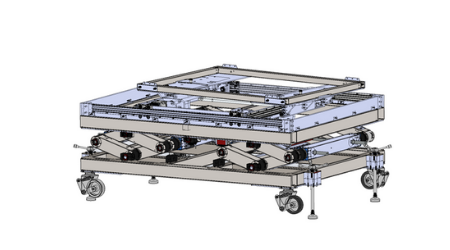
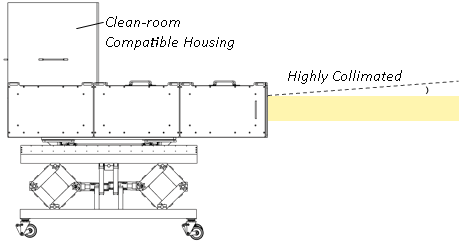
Prototype Design and Development
A high powered 6.5 kW Xenon arc lamp was used as the base light source to simulate the solar radiation. The xenon lamp spectrum was modified using an air mass filter to meet AM0 spectral matching criteria.
The irradiance was achieved down to 0.1% of its full power with near continuous attenuation maintaining the spatial uniformity, spectral match and temporal stability.
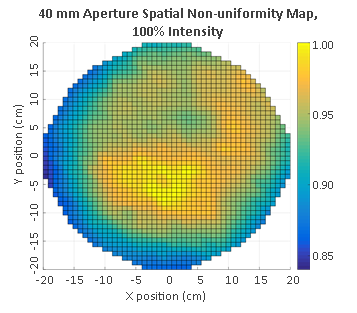
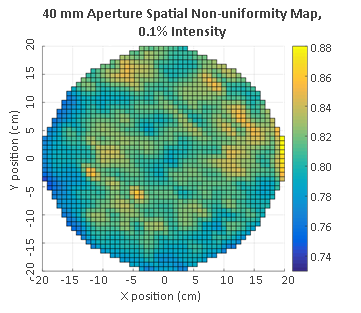
The temporal stability was measured over short, medium and long-term periods and met Class A specifications.
We achieved a high degree of collimation with 90% power within 0.69° full angle. The high collimation provided an equally uniform spot at several distances from the solar simulator output.
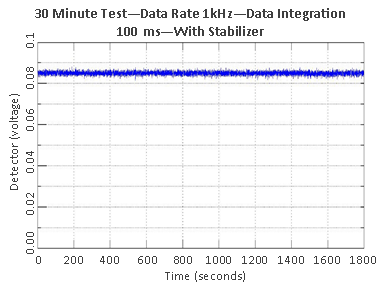
Temporal stability of the irradiance measured over 30 minutes
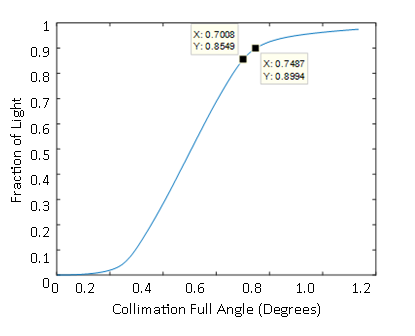
Clean Room Requirements
The entire system was sealed for use in a clean room, including an isolated air cooling system preventing contamination of the clean room environment. The entire system was compliant with ISO Class 5 clean room standards.
Acceptance Testing and Installation
Frequent contact with the customer’s team allowed Sciencetech’s engineers to make modifications to the design to ensure a better transition to the customer, and to help the customer gain confidence in the capabilities of the device they ordered. The final acceptance test was created in conjunction with the customer’s engineers, ensuring the instrument would operate within the parameters they needed the moment the device left Sciencetech. The final integration of hardware and software was completed at the end-user’s facilities, and the device passed acceptance testing with full approval.

